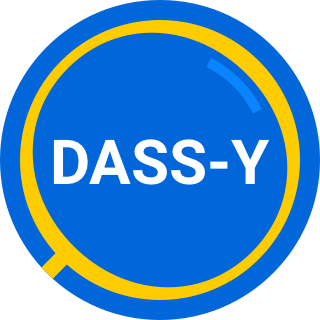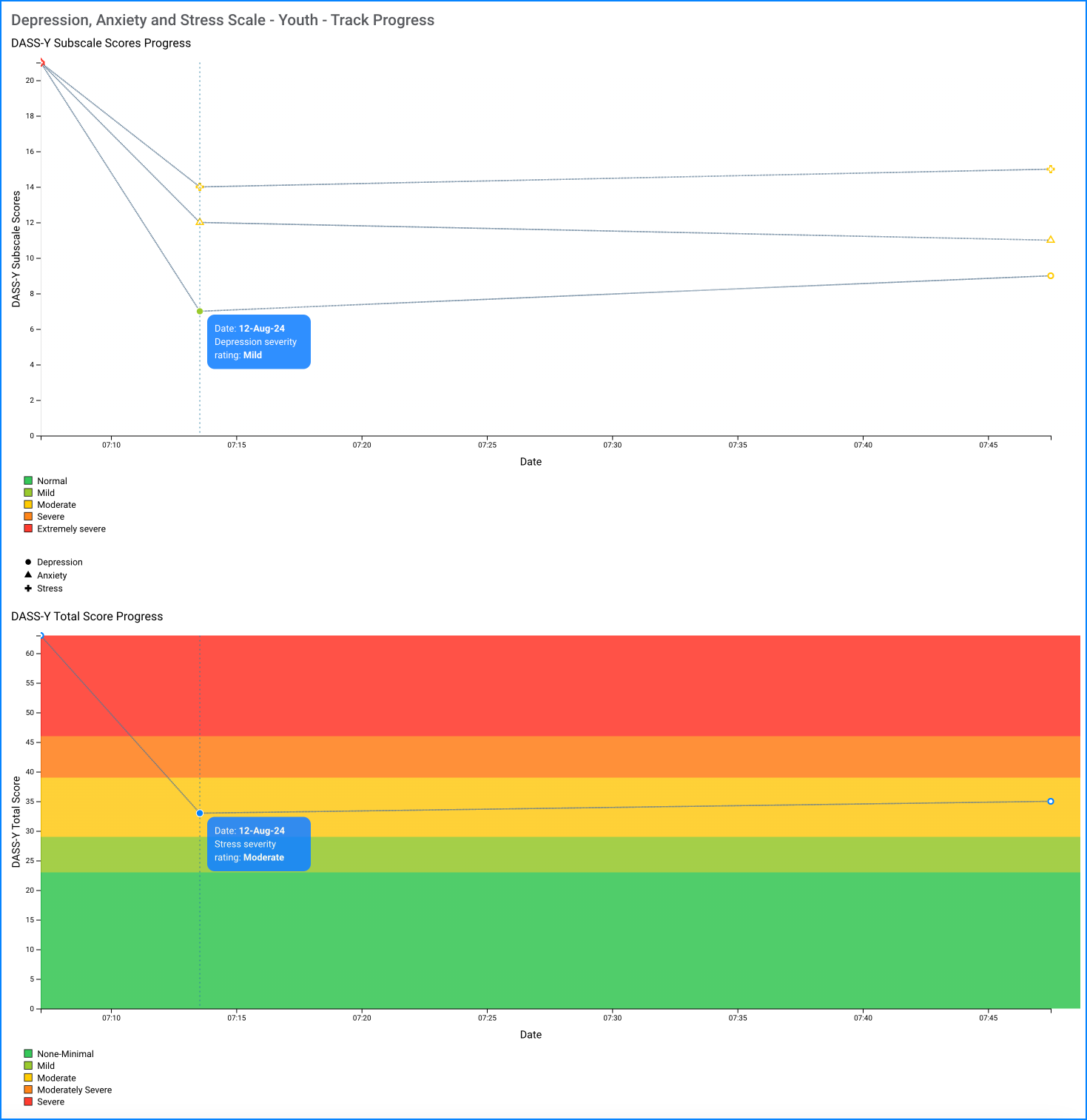The DASS-Y has 21 items and uses the same scoring template as the adult DASS and DASS21.
The DASS-Y consists of 21 sentences. Participants rate how TRUE each sentence was of them during the past week, on a 4-point (0,1,2,3) severity/frequency scale. Scores for the Depression, Anxiety and Stress scales are determined by summing the scores for the relevant 7 items.
The following indicates which items belong to which scale.
Depression - Items 3, 5, 10, 13, 16, 17, 21
Anxiety Items 2, 4, 7, 9, 15, 19, 20
Stress - Items 1, 6, 8, 11, 12, 14, 18
If you are using the DASS-Y (21 items) there will be 7 items per scale so you will only apply the scoring template to the single sheet; you do NOT need to multiply the scores by 2 as per the DASS21, because the DASS-Y is a standalone instrument with scores that cannot be directly compared to either of the adult questionnaires (DASS and DASS21).




